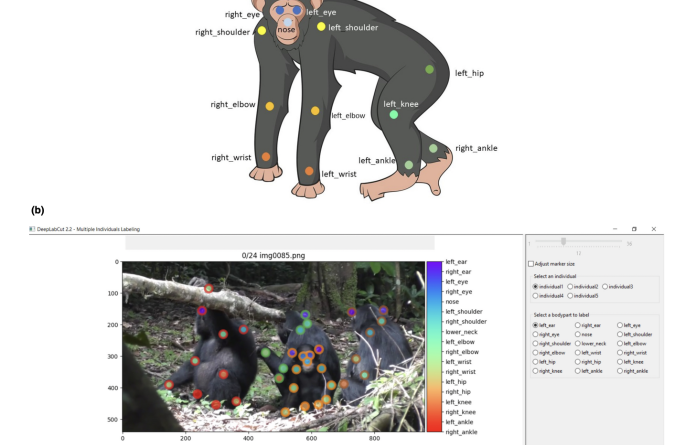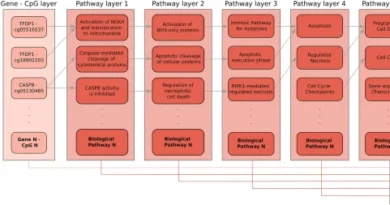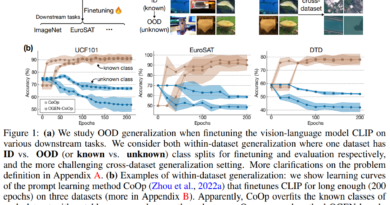How Machine Learning Revolutionizes Wild Primate Behavior Analysis with DeepLabCut
Studying animal behavior is essential for understanding the intricate dynamics of wildlife species and their interactions within their natural habitats. In the past, researchers relied on manual methods to extract behavioral data from extensive video footage, a time-consuming and labor-intensive process. However, with recent advancements in machine learning, specifically with tools like DeepLabCut, analyzing wild primate behavior has undergone a significant transformation. This article explores the revolutionary impact of machine learning on wild primate behavior analysis and how DeepLabCut has become a game-changer in this field.
Understanding the Challenges of Wild Primate Behavior Analysis
Analyzing and interpreting the behavior of wild primates is not a straightforward task. These animals exhibit complex and nuanced behaviors that can be challenging to capture accurately. Traditional methods of behavior analysis often involved manually coding video footage, which was not only time-consuming but also prone to errors and inconsistencies due to human subjectivity. Researchers required extensive training to ensure reliability in their coding processes.
The Rise of Machine Learning in Behavioral Research
Machine learning has emerged as a powerful tool in automating data extraction and improving the efficiency of behavioral analysis while maintaining reliability. By leveraging advanced algorithms and models, machine learning techniques can recognize species, individuals, and specific behaviors in videos, enabling researchers to track and analyze behavior efficiently. This transformation has not only enhanced the accuracy and speed of data extraction but has also enabled the analysis of large datasets that were previously unmanageable.
DeepLabCut: Empowering Wild Primate Behavior Analysis
DeepLabCut is a state-of-the-art deep learning tool designed to track and analyze complex animal movements in videos. It utilizes convolutional neural networks (CNNs) and pose estimation models to identify key points on animals’ bodies, enabling researchers to track their movements accurately. This tool has opened up new avenues for studying and understanding the behavior of wild primates in their natural habitats.
Installation and Setup
To utilize DeepLabCut, researchers need to follow a step-by-step installation process. Various guides are available to assist with the installation and initial setup, emphasizing the importance of Python installation. Additionally, DeepLabCut has specific hardware requirements, recommending the use of a GPU for optimal performance. Researchers can also choose to leverage cloud-based platforms like Google Colaboratory for easier access and collaboration [1].
GUI Functionality and Training Progress
DeepLabCut provides a user-friendly graphical user interface (GUI) that allows researchers to annotate key points on animal bodies for training. The GUI offers functionalities to mark and label specific body parts, which are essential for model training. During the training process, researchers can monitor the loss graphs to gauge the progress of the model. This enables them to optimize their training parameters and improve the accuracy of behavior tracking [1].
Ethical Considerations and Data Collection
When analyzing wild primate behavior, ethical considerations play a crucial role. Collecting video data from natural habitats requires researchers to follow ethical guidelines and obtain the necessary permissions. DeepLabCut provides researchers with the opportunity to leverage existing video databases, such as the Great Ape Dictionary Database, for behavioral analysis. By utilizing publicly available data, researchers can contribute to the advancement of primate behavior research while minimizing the impact on wild populations [2].
Video Selection and Training Set Preparation
Selecting suitable videos for training DeepLabCut models is essential to ensure accurate behavior tracking. Researchers consider factors like visual “noise” to expose the model to diverse learning experiences. Determining the required number of training frames depends on the complexity of the behavior being analyzed. Researchers must strike a balance between having enough training data and avoiding overfitting the model. The selection of appropriate training sets and video preparation methods significantly influences the accuracy and robustness of the trained models [2].
Performance Assessment and Model Evaluation
After training DeepLabCut models, researchers need to assess their performance and evaluate their accuracy. This involves comparing the model-generated key points with human-labeled points, ensuring consistency and reliability. Evaluation on test frames, which may contain some training data, provides insights into the model’s generalization capabilities. Furthermore, testing the models on entirely new videos helps determine their effectiveness in detecting body points and accurately tracking behavior. These assessments shed light on the strengths and limitations of the models, guiding researchers in refining their methodologies [2].
Promising Results and Ongoing Challenges
Experiments utilizing DeepLabCut for tracking the movements of wild chimpanzees and bonobos have demonstrated promising results. Comparative analysis between model-generated and human-labeled points revealed enhanced accuracy in marking key points on video frames. However, challenges remain, particularly in effectively linking detected points, which can result in tracking issues in certain videos. Human intervention is often required to correct tracking errors, underscoring the need for continuous refinement and optimization of the tracking systems [2].
The Transformative Impact of Machine Learning in Behavioral Research
The integration of machine learning tools like DeepLabCut has revolutionized the field of wild primate behavior analysis. By automating the process of data extraction and behavior tracking, researchers can now analyze large datasets efficiently, providing valuable insights into the behavior of wild primates. Machine learning techniques offer a holistic view of behavior over time, enabling researchers to study complex interactions and social dynamics. This transformative impact has opened up new possibilities for understanding primate behavior and its implications for conservation and ecological research.
Conclusion
The use of machine learning, particularly with tools like DeepLabCut, has revolutionized the analysis of wild primate behavior. By automating the process of extracting behavioral data and accurately tracking animal movements, researchers can now analyze complex behaviors in natural settings more efficiently and reliably. DeepLabCut, with its deep learning algorithms and pose estimation models, offers a powerful solution for studying the behavior of wild primates, contributing to our understanding of these incredible creatures and the ecosystems they inhabit. As technology continues to advance, we can expect further refinements and improvements in machine learning techniques, creating new opportunities for behavioral research and conservation efforts.
Check out the Paper. All credit for this research goes to the researchers of this project. Also, don’t forget to follow us on LinkedIn. Do join our active AI community on Discord.




